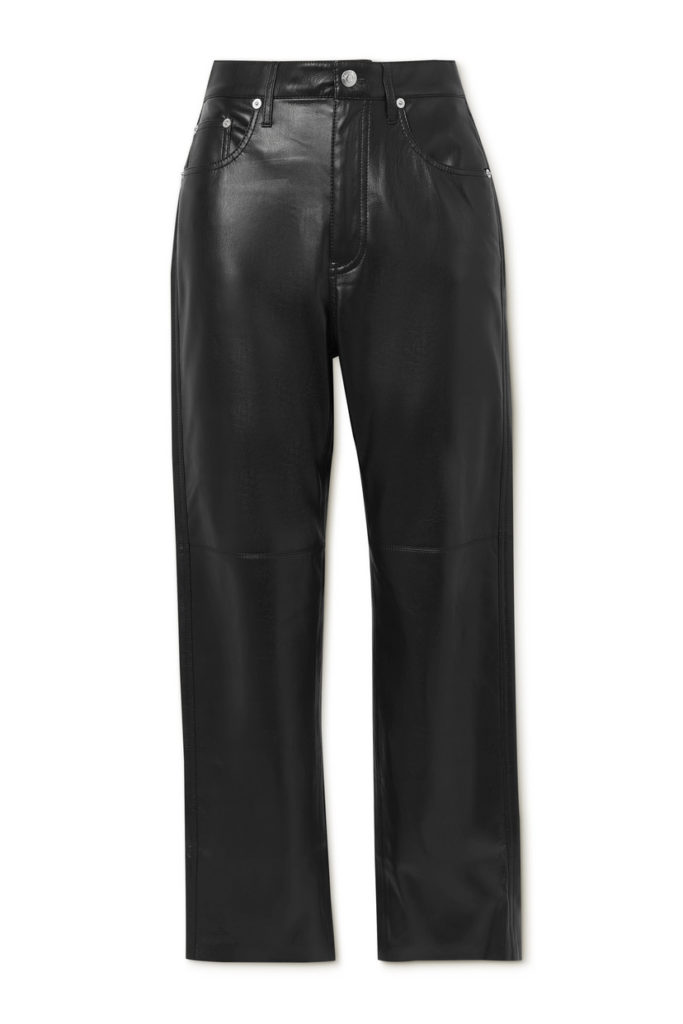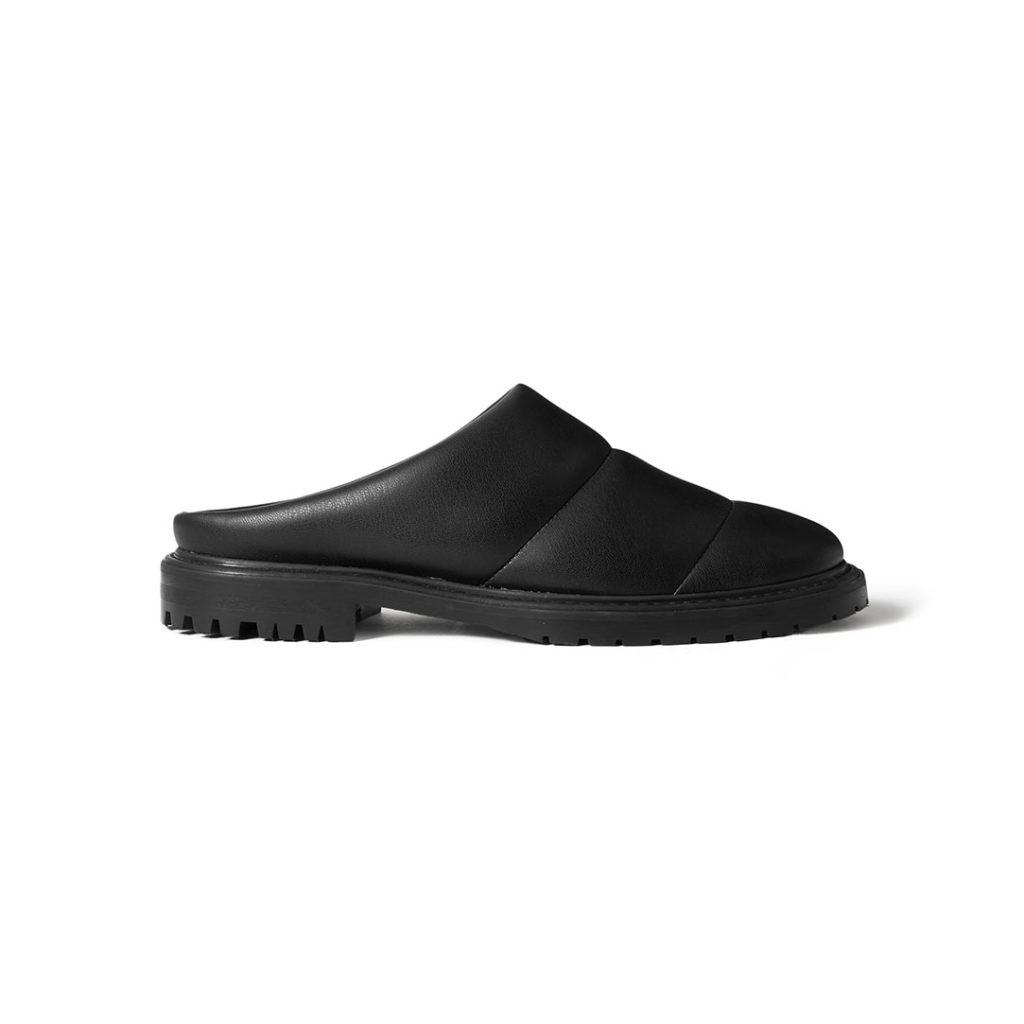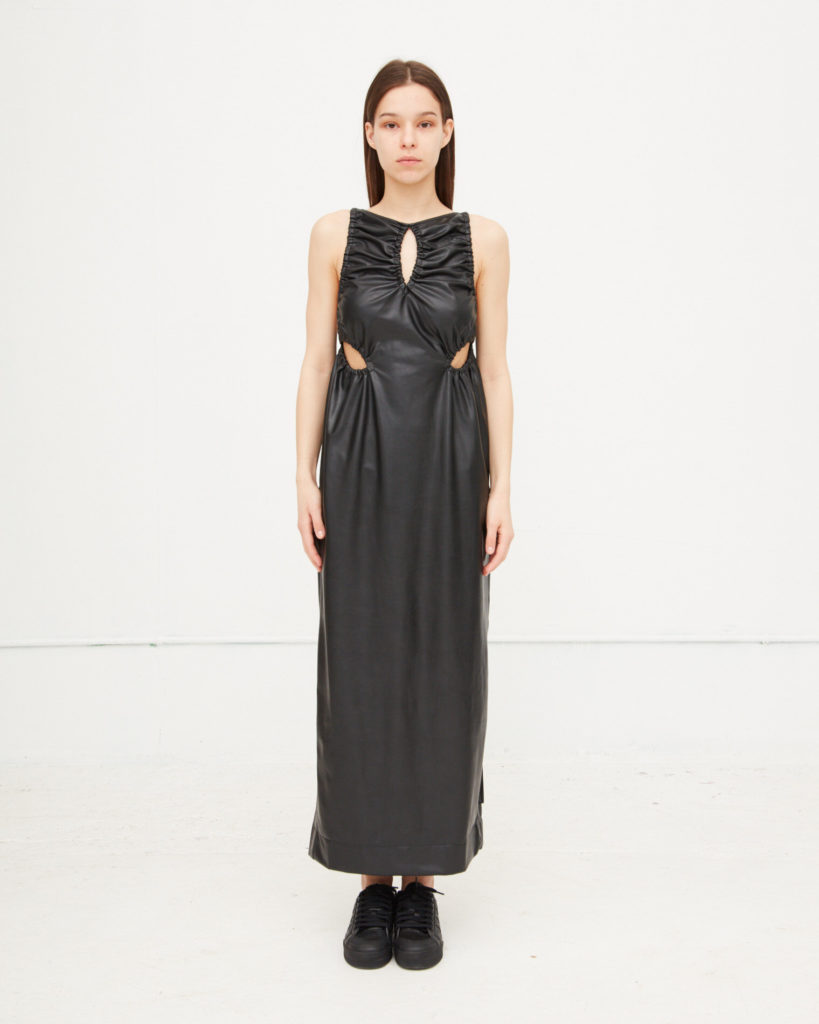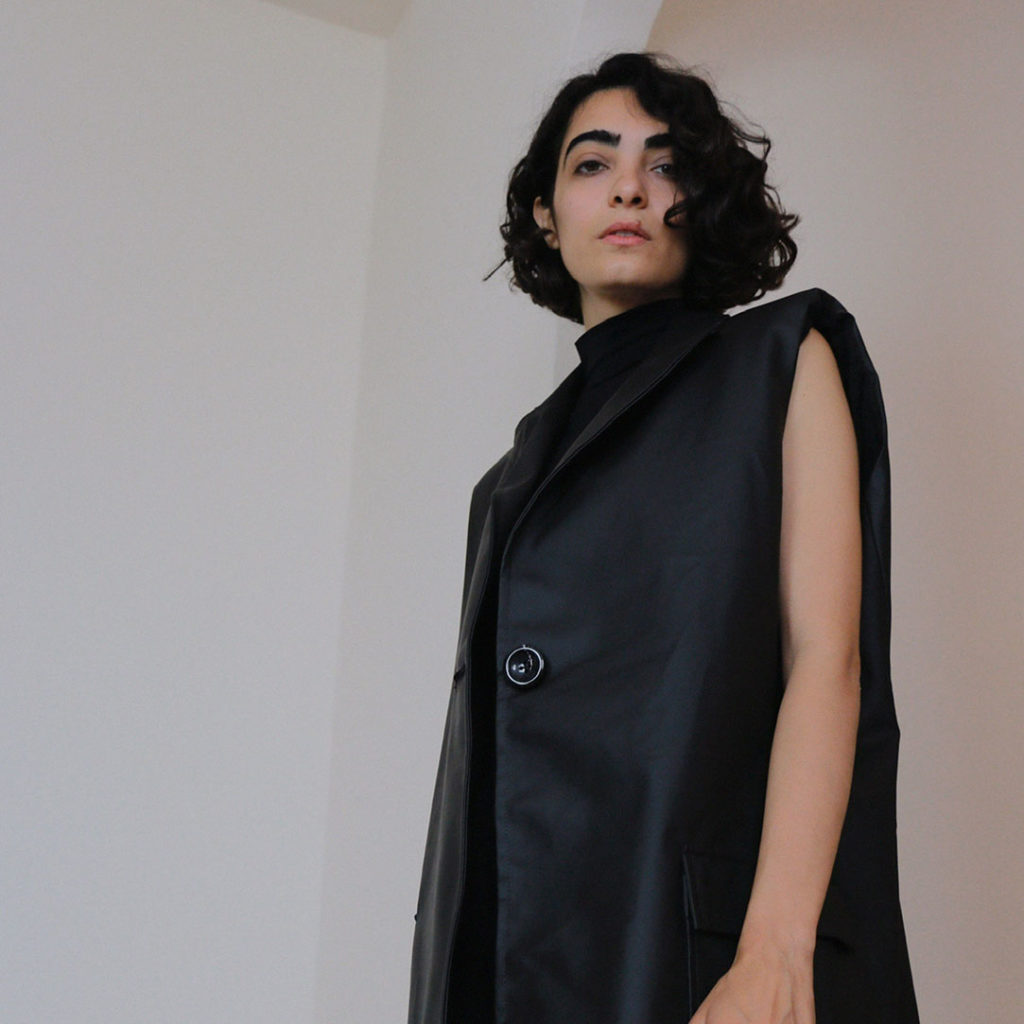Since the founding of fashion’s most storied ateliers, genuine leather has been a marker of luxury. But as the industry moves toward a more sustainable future, demand for alternatives to animal hide and polyurethane-based (a.k.a. plastic) synthetics continues to rise.
A number of companies have stepped up to meet that demand, using natural resources to produce innovative textiles that are a far cry from the faux leathers of years past. One current alternative is Reishi, a fungi-based material developed by the biotechnology company MycoWorks. Reishi is made from mycelium—the network of threads or strands that grow to form mushrooms—using a proprietary process called Fine Mycelium.
Piñatex Metallic Wrinkled Gold: photo courtesy of Ananas Anam.
The process starts with “creating a healthy, happy growth environment for the mycelium,” says Sophia Wang, chief of culture and co-founder of MycoWorks. A proprietary bioreactor unit in the form of a covered tray ensures the mycelium has the perfect conditions for optimized growth, customization, and traceability. Once the mycelium reaches the desired thickness and size, it’s harvested, stabilized, and shipped to a tannery in Europe to be finished. Then, Wang says, “within a matter of weeks, the sheet is ready for use by brands for creating and fabricating.”
MycoWorks has already worked with Hermès, but Wang remains tight-lipped about future brand partnerships. However, she promises that upcoming launches are “really exciting and [speak] to the moment that we’re in, where brands are ready to adopt this.”
MykoWorks: photo courtesy of MykoWorks.
Another leather alternative is Piñatex, a plant-based textile made from pineapple leaf fibres, created by London-based company Ananas Anam. Dr. Carmen Hijosa, founder of Ananas Anam, explains that the leaves used to produce Piñatex are waste from the pineapple harvest. “We do not use any land, any water, any pesticides, any fertilizers to get our raw material, which is really quite unique,” she adds.
Hijosa explains that Ananas Anam works with pineapple co-ops in the Philippines to gather the leaves and produce the textile. The process involves extracting the fibres from the leaves, then washing the fibres with plain water and drying them in the sun. Next, the fibres are purified, cut, and prepared to be made into a felt-like material called Piñafelt. Finally, it’s sent to Spain, where it’s coated with a pigmented plant-based resin for strength and colouring.
Hijosa developed Piñatex with sustainability and transparency in mind. “More companies and consumers are demanding more transparency and more materials that respect the environment,” she explains. “This is becoming more important, and I think we are pretty much at the top of this kind of transparency.”
Mariam Al Sibai: photographed by Esme Al Sibai.
It’s important to note that, while these alternative textiles can be used as substitutes for leather or polyurethane synthetics, they aren’t necessarily one-to-one replacements for animal hide. “You have to see it as a different fabric, because it performs differently, it looks different, and it feels different,” says Mariam Al Sibai, a New York–based fashion designer who offers outerwear made from Piñatex, as well as from a cactus-based material called Desserto. “They’re different and beautiful in their own way.”
For Al Sibai, the environmentally-conscious aspects of these new textiles are pertinent to her design philosophy. “I genuinely believe in sustainability as a holistic approach—mentally, physically, spiritually, what you eat, what you say, how you live. For me to incorporate fabrics that are under that umbrella is very important,” she says.
The future of natural leather alternatives looks quite bright, as more brands—including heavy hitters like Stella McCartney, Lululemon, and Nike—are incorporating them into their offerings. In Al Sibai’s opinion, we’ll only be seeing more of it. “Frankly, I think that’s a fantastic thing,” she says. “The more that these fabrics become widely available and used, the less we’re going to be using PU alternatives and even leather.”
View the gallery below to shop our edit of cruelty-free styles.




